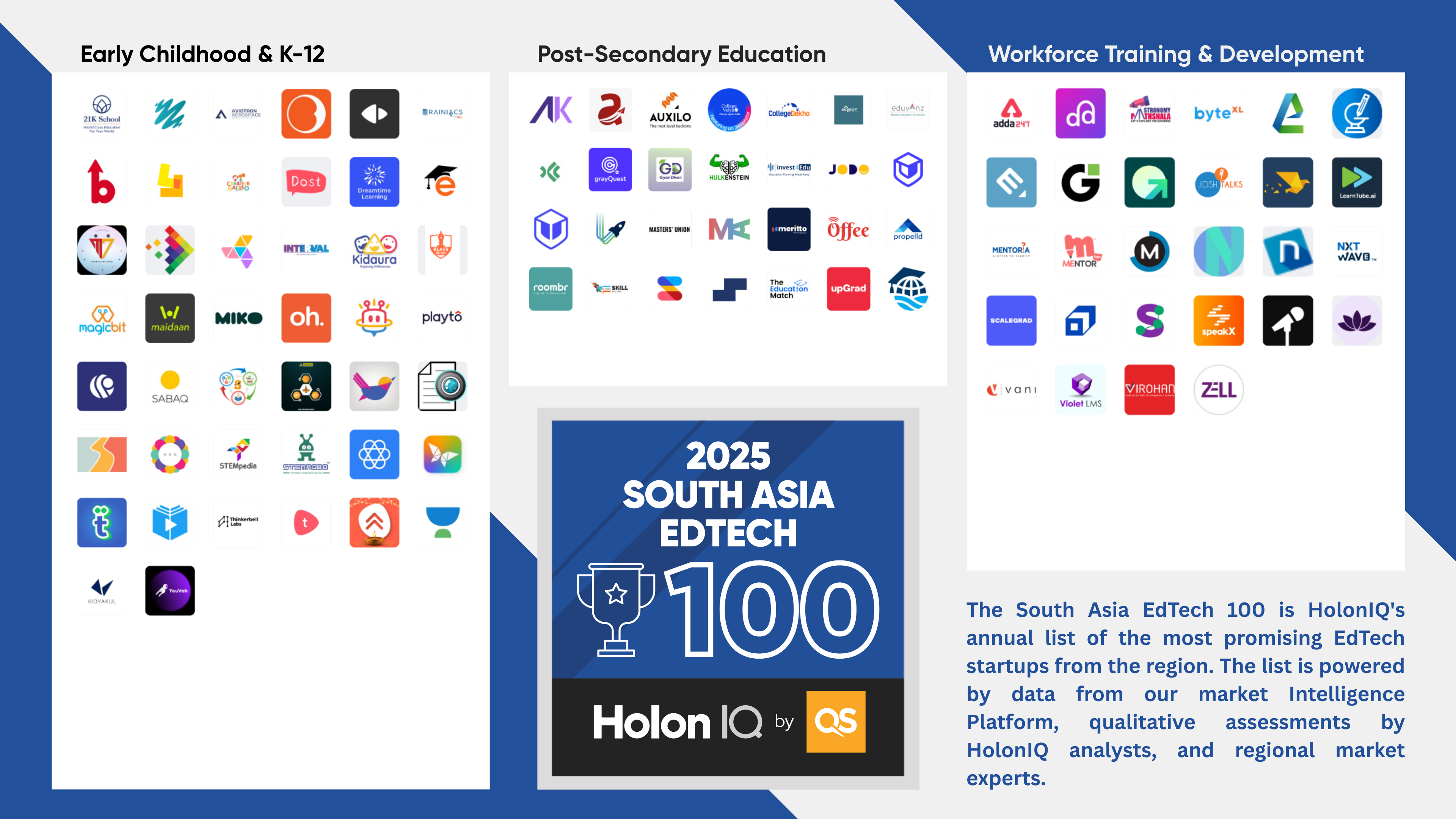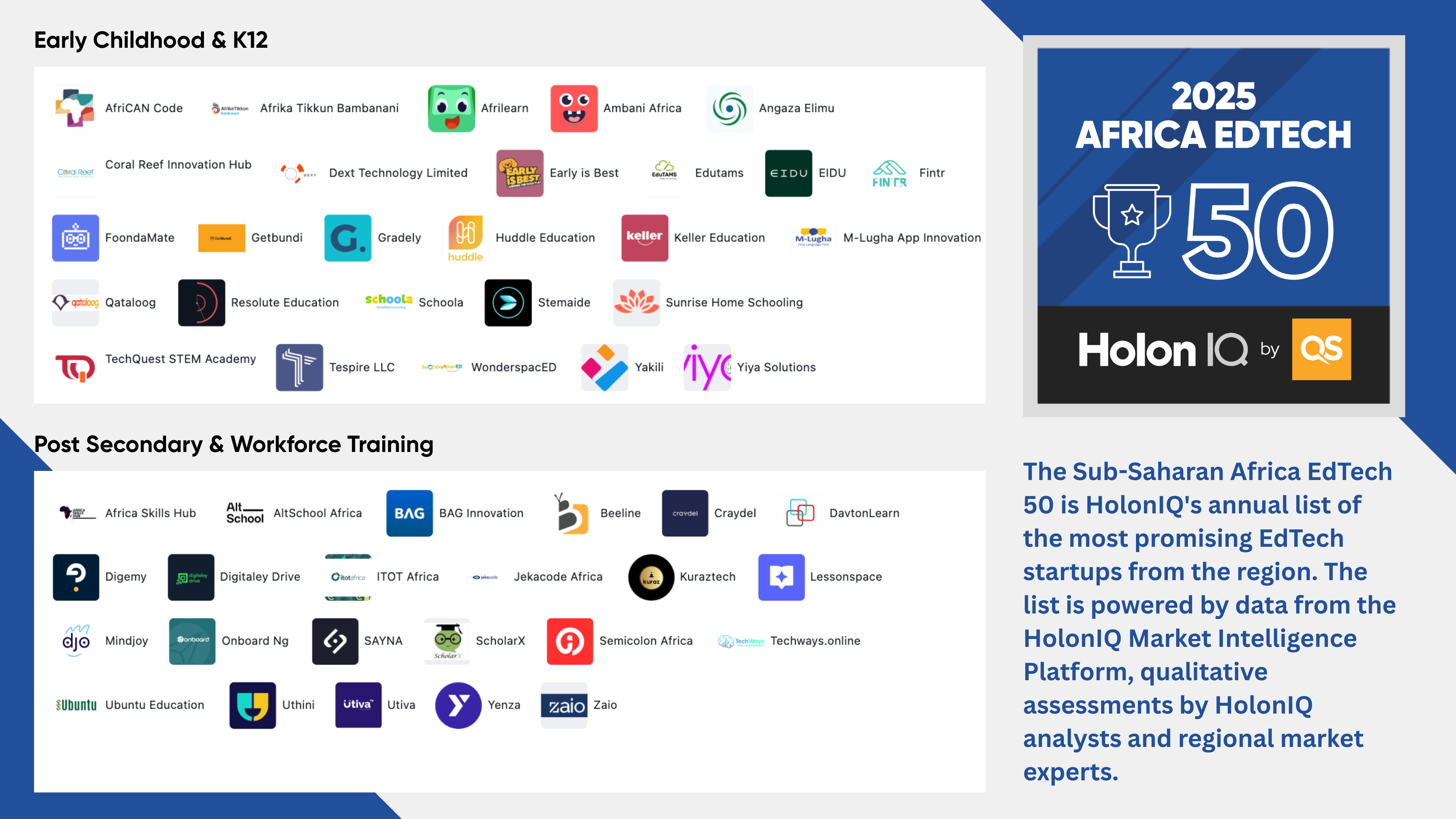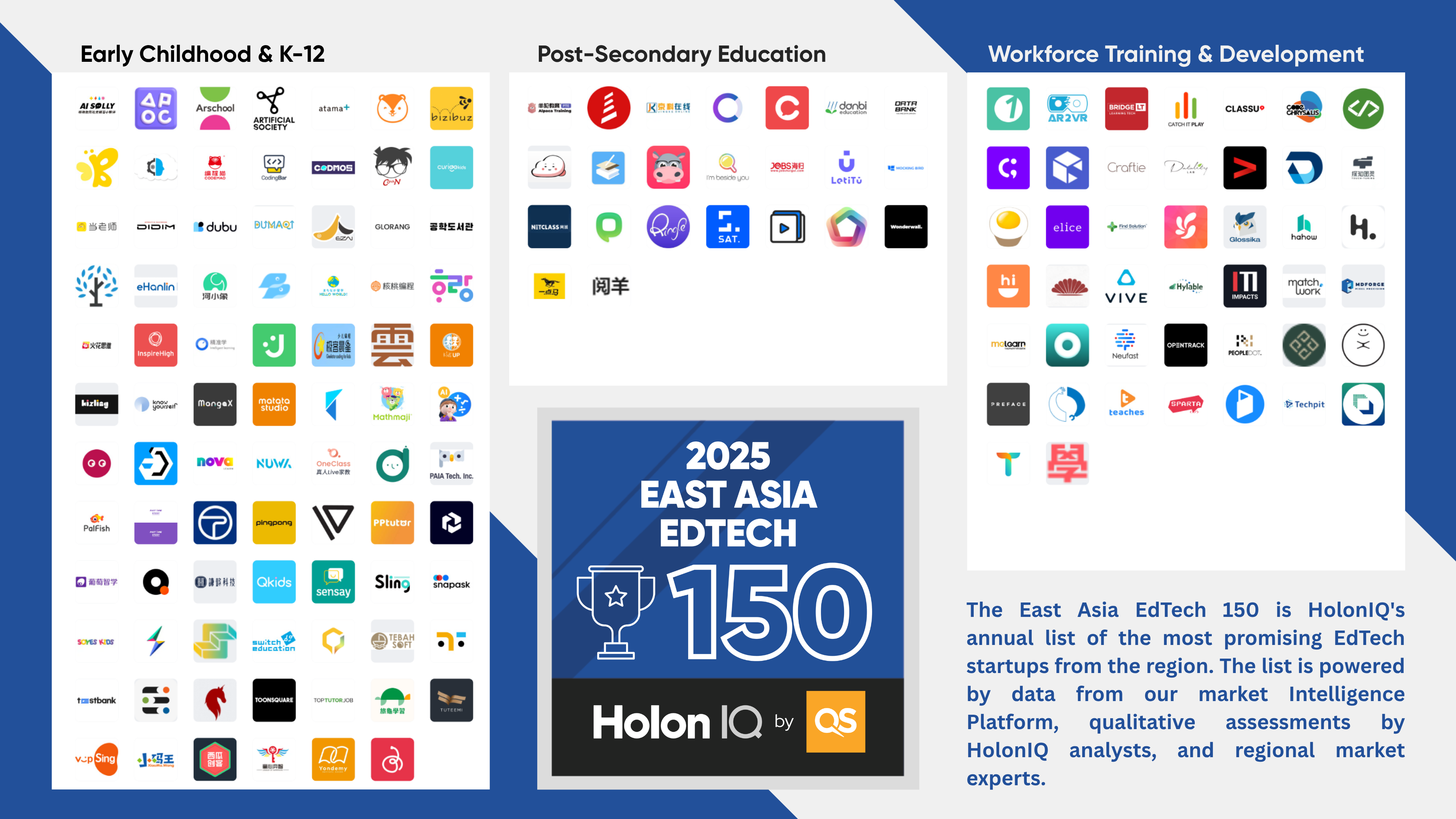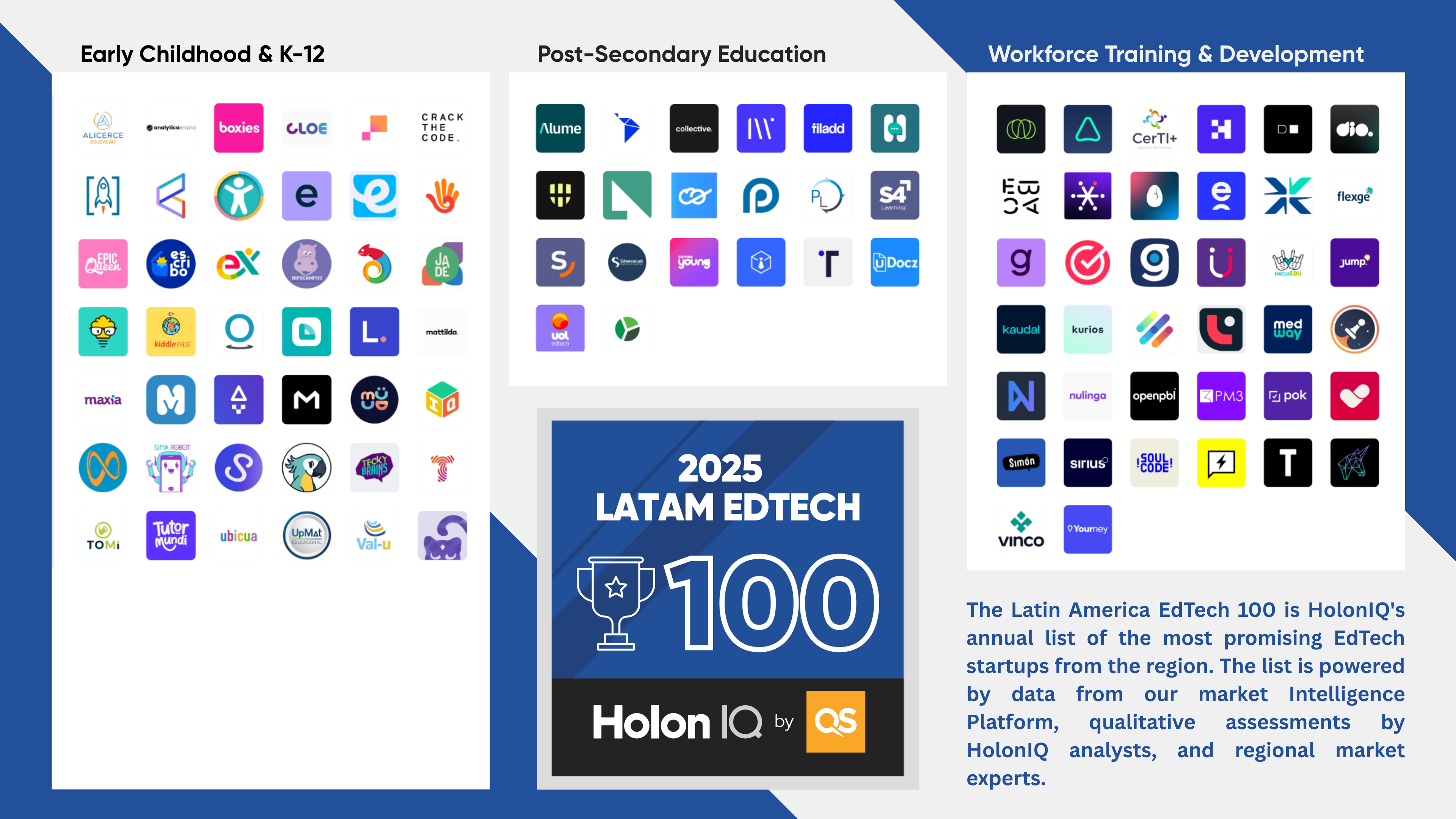250,000 fewer High School graduates from 2025 to 2030, increased online and hybrid learning, and a sharp rise in non-degree credentials mean big changes for US post-secondary education.
HolonIQ recently partnered with the American Council on Education (ACE) to review 50 years of change in the Carnegie Classification, situating decades of data in the broader context of US education, sometimes as far back as 1870. From high school graduates and women’s participation in higher education to evolving learning modalities and labor market shifts, change has been both fast and slow. Forecasts suggest that some of the biggest changes for higher education institutions are still to come.
Looking back to the 1970s when development of the Carnegie Classification began, women made up approximately 20% of enrollments in US higher education. Today, women represent nearly 60% of total enrollments, broadly in line with the global average. In terms of race and ethnicity, over 85% of US college students were white in the mid-1970s, with college populations becoming gradually more diverse with each decade. Today, just over 50% of college enrollments come from white students, with the biggest growth in Hispanic students, who make up over 20% of enrollments and are forecast to grow as we approach 2030.
Stretching back further, the growth of high school graduates over the last 150 years has been remarkable, and graduation numbers are set to increase up until 2025. From there, however, forecasts point to a decline of around 250,000 high school graduates between 2025 and 2030, with graduation numbers returning to around 2015 levels - essentially 15 years of lost growth. This has implications not only for universities, but for the broader workforce too.

Learning modalities may not have changed a great deal through the 20th century, but the last 10-20 years have ushered in new forms of learning and innovation, fast becoming the norm in some institutions. Transformation was already underway before the COVID-19 pandemic, with on-campus enrollments in higher education declining by around 10% since 2012 in favor of online and hybrid modes. Following the rapid shift to ‘emergency remote teaching’ during the pandemic, on-campus enrollments fell to less than 30% and have not returned to pre-COVID levels. With online and hybrid modes now becoming the dominant modes, the decline of purely on-campus learning is forecast to continue.

Adding to the changing landscape is the international student population. The US has long been a popular destination for international students, with the last decade showing huge growth from China and more recently, India. Despite losing some market share to popular destinations Canada, Australia and the UK, 1.2m international students are forecast in the US by 2030, with India set to overtake China as the dominant cohort.
Skills and credentials have also been a much-debated topic in higher education over the last few years, with increasing pressure on institutions to respond to skills shortages and calls from industry for universities to align learning more effectively with emerging technologies and workforce needs. Unsurprisingly, there has been huge change in the US since the 1970s in terms of sectoral and labor market shifts. In 1973, the biggest industry by far was manufacturing (18.6m employed) followed by trade, transportation and utilities (15.3m); in 2023, manufacturing has shrunk to 13m, and whilst trade, transportation and utilities has almost doubled to 28.9m, the biggest growth has been seen in private education and health services, which grew almost 5x over this period to become the second largest workforce in the US (25m).
Looking ahead, the fastest growing occupations that require a bachelor's degree or higher are in health: Medical & Health Service Managers (28% growth) and Nurse practitioners (40% growth). Also set to grow, but from a smaller base, are STEM-related occupations including web developers (30%), Information Security Analysts (35%) and Data Scientists (36%).

At the same time, there are clear emerging signals that non-degree credentials are on the rise, and are estimated to be the most conferred award in US Higher Education in the next 10 years.
The wage premium demanded by a bachelor’s degree may have reached its peak already; between 2019 and 2022, the percentage of potential students planning to pursue a non-degree program grew from 34% to 47%. In the workforce, 81% of employers think they should look at skills rather than degrees when hiring. 86% of students believe an industry certificate will help them stand out to employers when they graduate.

Billions of dollars in funding is now powering alternative credentials, with $25B in private capital allocated to ‘new’ models of learning and upskilling in the past 10 years, over two-thirds of this in Upskilling, 21% in Bootcamps and 10% in MOOCs. There has been a 211% increase in issued badges over the last 4 years, with 75m digital badges issued globally. University leaders see alternative and micro-credentialing as an important strategy for their institution’s future, with increasing numbers putting policies in place and 95% expecting micro-credentials to be integrated into most degree programs in the future.
The Carnegie Classification: Fifty Years of Change in US Higher Education was held live at the American Council on Education's Annual Meeting in Washington DC followed by a panel of experts about how the expanded Carnegie Classification categories will impact higher education and advance social and economic mobility. Ted Mitchell, President of ACE, Doug Lederman, Editor and Co-Founder of Inside Higher Ed, and Maria Spies, Co-CEO of HolonIQ joined a panel discussion moderated by Mushtaq Gunja, Executive Director of the Carnegie Classification systems to reflect on the presentation and discuss the future of Higher Education in the US and how the Carnegie Classification needs to consider these changes.
In this recent webinar, Maria Spies, Co-CEO HolonIQ and Hironao Okahana, Assistant Vice President & Executive Director of the Education Futures Lab at the American Council on Education shared a follow-up presentation covering the data and in conversation on the future of Post Secondary Education in the United States. Watch on-demand.









.png)







